
Developing green industrial parks is no longer just a trend, it has become a necessity for modern investors and businesses. As environmental, energy, and social responsibility standards grow increasingly stringent, designing industrial zones with a green orientation from master planning to factory design is emerging as a clear competitive advantage in the market. This is the moment for industrial parks in Vietnam to undergo a transformative shift that enhances operational efficiency and attracts sustainable FDI inflows.
Vietnam officially committed to achieving net-zero emissions by 2050 and reducing methane emissions by 30% by 2030 at COP26. This is not merely a political statement, it requires an urgent restructuring of the industrial sector toward sustainability.
To support this roadmap, the government issued the National Green Growth Strategy and Decree No. 35/2022/ND-CP on the management of industrial zones and economic zones. These regulations pave the way for green industrial park development while setting clear criteria for resource use, waste management, green space planning, and energy efficiency in construction design of factories and infrastructure.
In the era of deep international integration, FDI investors increasingly prioritize green infrastructure that meets ESG (Environmental – Social – Governance) standards. Particularly, demands for sustainable supply chains, carbon traceability, and emission reduction have become new trade barriers for traditional manufacturing businesses.
Industrial parks that take the lead in building sustainable factories, adopting renewable energy, and controlling environmental impacts will gain a significant competitive edge: better access to green capital, carbon credits, and enhanced brand reputation in the eyes of global partners.
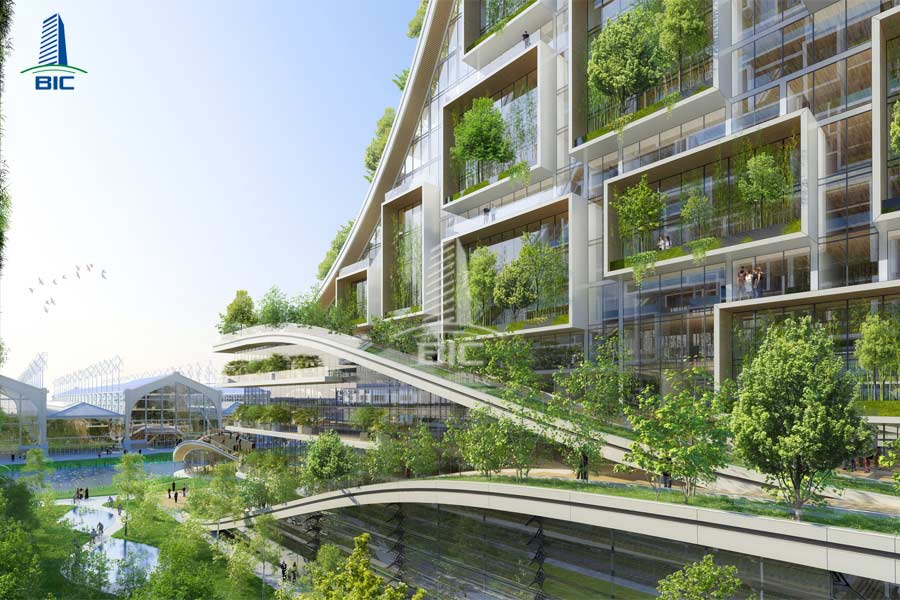
Unlike traditional industrial zones that focus primarily on land efficiency and upfront investment, green industrial parks require a holistic approach from the design stage. The core requirement is to meet ESG criteria in every aspect.
Factory designs should ensure:
- Energy optimization: use of insulated roofing, LED lighting systems, and solar panels.
- Water conservation and treatment: rainwater harvesting, greywater reuse, and on-site wastewater treatment.
- Eco-friendly materials: prioritizing non-fired bricks, low/no VOC paint, and recycled materials.
- Worker well-being: natural ventilation, adequate daylight, and comfortable living and working spaces.
These are no longer trends, they are mandatory standards for large-scale industrial park projects today.
A hallmark of green industrial zones is the industrial symbiosis model, where enterprises share infrastructure, resources, and waste streams. This necessitates a higher level of planning and coordination between factories.
For example, exhaust gases, residual heat, or wastewater from Factory A can become input for Factory B. To make this feasible, the factory design must ensure synchronized technical infrastructure and allow for flexible adjustments.
Architects and engineers must work closely with investors from the outset to optimize site layouts, technology, and materials with the goal of achieving low-emission and efficient operation.
VSIP III is a pioneer green industrial park in Vietnam, planned from the ground up with a total investment area of about 1,000 hectares (phase 1), and a total capital of nearly VND 6,500 billion (~USD 282 million). Adhering to international standards such as LEED (U.S.), this park focuses on:
- Integrated rooftop solar power systems for factories.
- A centralized wastewater treatment plant with water reuse capabilities.
- Extensive green space planning to reduce the heat island effect.
This is a prime example of an industrial park designed in conjunction with clean, eco-friendly energy solutions an essential condition for attracting green FDI.
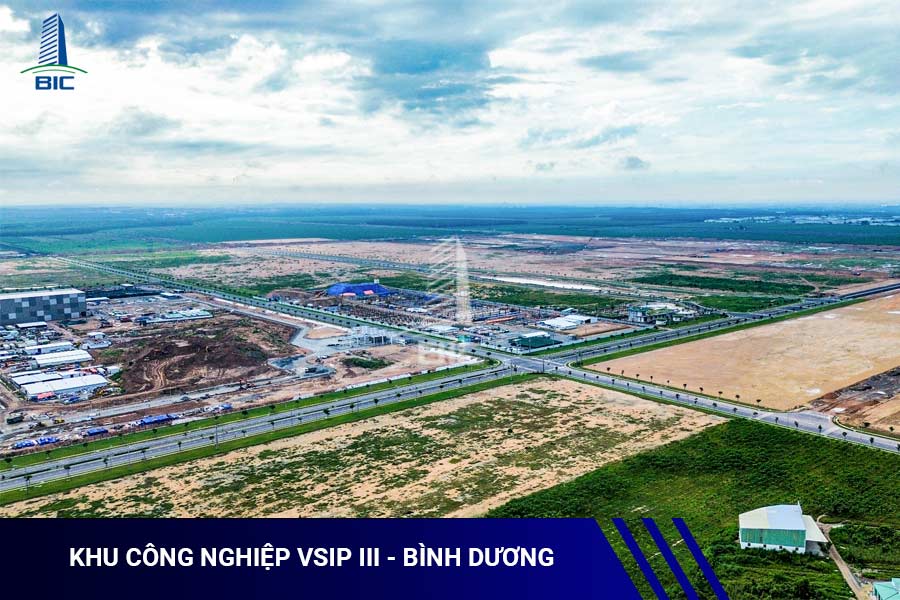
With an area of about 541 hectares and established in 1997, Deep C is located near the Lach Huyen and Dinh Vu deep-water ports, ideal for import-export activities. It represents a typical industrial symbiosis model in Northern Vietnam. Notable construction features include:
- Utilizing waste heat from gas-fired power plants to dry raw materials.
- A shared wastewater treatment system integrated with reuse in production.
- Flexible layout design to optimize logistics and reduce internal transport emissions.
Factory design here follows energy-saving standards and incorporates advanced technologies such as IoT monitoring, green roofs, and eco-friendly materials.
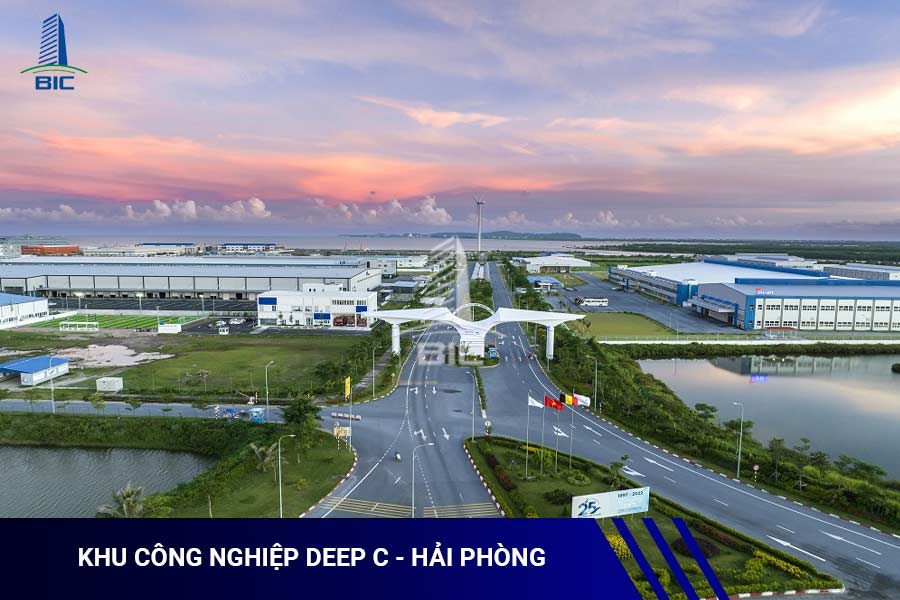
Covering over 410 hectares, AMATA Long Thanh's phase 1 infrastructure investment reached VND 945 billion (~USD 41 million) out of a total USD 282 million. More than a modern industrial park, AMATA integrates:
- Eco-urban areas and worker housing.
- Smart internal traffic systems and workshop layouts designed to streamline operations and reduce logistics costs.
- Smart infrastructure with integrated environmental and energy monitoring systems.
Design here emphasizes flexibility for expansion and adaptability to new technologies, serving high-tech industries.

In green-oriented industrial parks, factory design must go beyond functional requirements to incorporate materials and technologies that minimize environmental impact. Notable trends include:
- Eco-friendly materials: non-fired bricks, lightweight concrete, Low-E glass, and low/no VOC paints to reduce construction emissions and improve indoor air quality.
- Insulated and green roofs: reduce heat, enhance insulation, and absorb CO₂.
- BIM (Building Information Modeling): accurately predicts performance and energy usage, enabling design optimization from the blueprint stage.
- IoT and automated monitoring systems: real-time control of electricity, water, and emissions.
Selecting suitable materials and technologies helps lower long-term operating costs while boosting the value of the factory in the eyes of international partners.
One core principle in green factory design is a holistic approach from site selection and building orientation to workflow organization. Specifically:
- Internal traffic flow optimization: logically arranging entrances, warehouses, production, and support areas to reduce congestion and energy consumption.
- Maximizing natural light and ventilation: using sunshades, skylights, and cross-ventilation to reduce dependence on artificial cooling.
- Flexible zoning: allowing easy repurposing or expansion to adapt to new production needs.
These solutions help reduce investment and operating costs, while also improving management efficiency and ESG compliance.
Proactively applying green design solutions for factories is not only regulatory compliance, it’s a long-term strategy to enhance competitiveness:
- Attracting high-quality investment: FDI investors, especially from Europe, the U.S., and Japan, require ESG compliance. Parks with sustainable infrastructure and factory design are prioritized.
- Access to green capital and carbon credits: Businesses can receive low-interest funding from sustainable development funds or sell carbon credits on global markets.
- Improving brand image: Well-designed, energy-efficient, green-operating factories demonstrate social responsibility and enhance brand value across the global supply chain.
- Long-term cost optimization: Although upfront costs may be higher, long-term savings in energy, water, maintenance, and staffing make it a worthwhile investment.
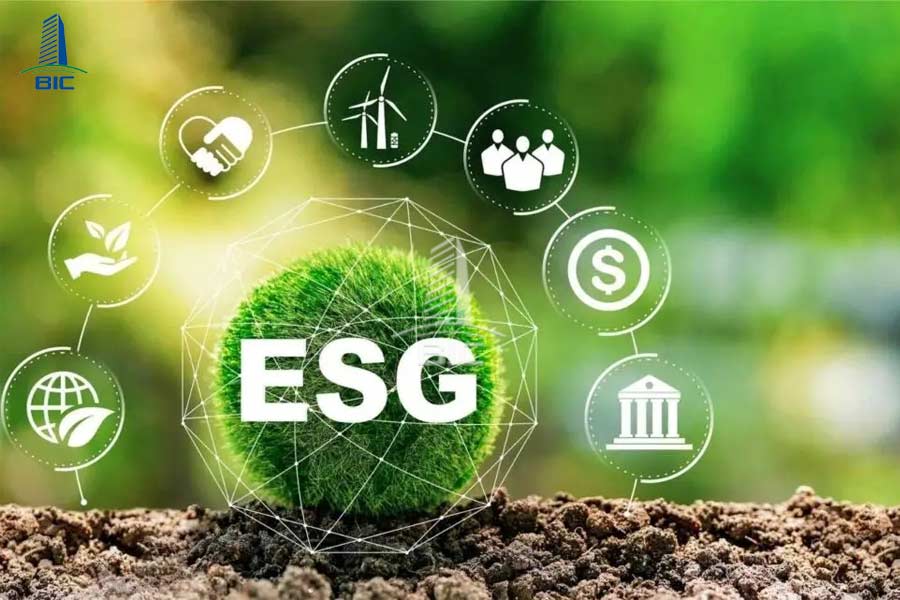
Despite the opportunities, designing and constructing green industrial park factories in Vietnam still faces several challenges:
- High initial investment: Eco-friendly materials, solar systems, wastewater treatment, and new tech require higher budgets than conventional factories.
- Lack of clear legal framework: While Decree 35/2022/ND-CP exists, a comprehensive evaluation system for green industrial design and operations is still lacking.
- Limited specialized workforce: There is a shortage of architects and engineers with hands-on experience in green industrial design, leading to longer timelines and adjustment costs.
Transition from old models: Retrofitting traditional factories to meet green standards is complex and may disrupt ongoing production.
Nonetheless, these challenges create opportunities for professional design consulting firms that can partner with investors to pioneer sustainable industrial models.
Developing green industrial parks requires more than just a planning vision—it demands participation from specialized design consulting firms. This is a vital first step in transitioning businesses toward sustainable and efficient production models.
A professional design consultancy typically provides comprehensive solutions, including:
1. Site survey and preliminary consultation: Assessing natural conditions and industry orientation to propose design solutions aligned with the investor’s green development strategy.
2. Integrated architecture, structure, MEP and fire safety design following ESG: Ensuring optimal functionality, energy savings, and environmental and labor safety compliance.
3. Investment cost estimation and legal documentation support: Accurately calculating total investment, balancing green materials, energy-saving tech, and long-term ROI.
4. Construction and strict supervision: Ensuring compliance with design drawings, material quality control, schedule, and performance after project completion.
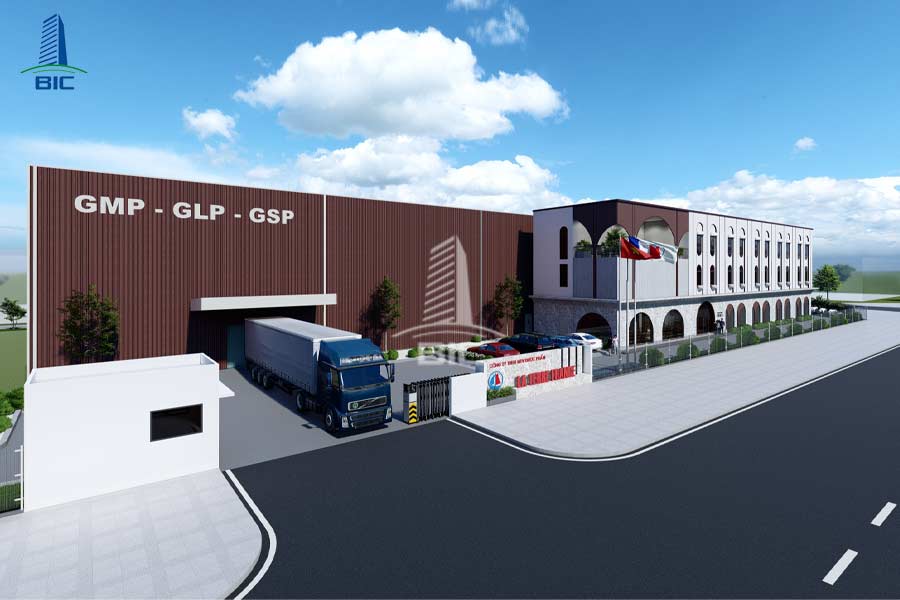
- Optimized site layout and initial investment.
- Efficient, cost-effective, long-term operation.
- Easier to obtain green certifications (LEED, EDGE, Lotus...).
- Support with legal procedures, environmental standards, and green investment incentives.
The development of green industrial parks is no longer a strategic option, it has become vital for businesses aiming for sustainable growth and global integration. To realize the green industrial park model, factory design plays a pivotal role in ensuring efficient operations, resource savings, and global ESG standard compliance.
Starting today, businesses can gain long-term competitive advantages by investing in sustainable factory design solutions, optimizing workflows, controlling emissions, and enhancing brand value. Contact BIC today for professional consultation on industrial factory design construction tailored for optimal efficiency, sustainability, and alignment with your green development goals.